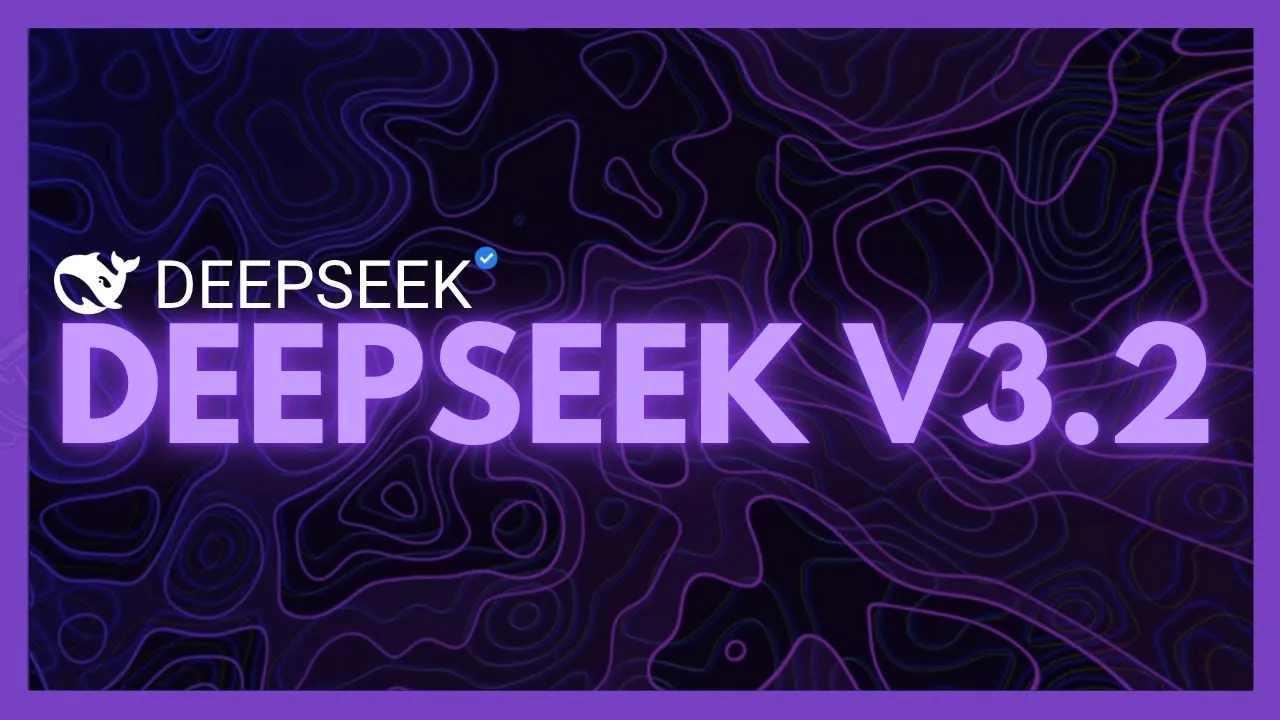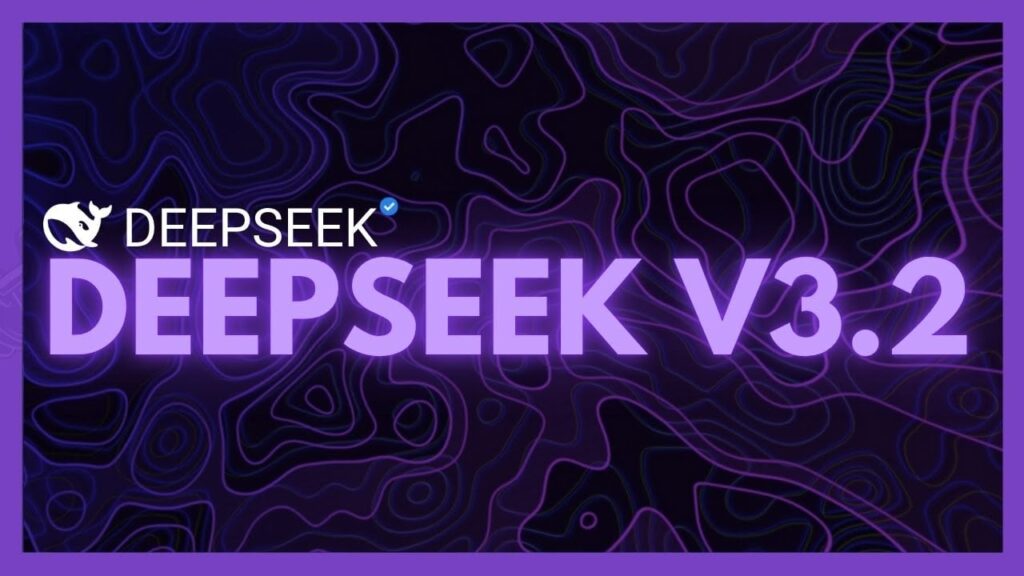
What if artificial intelligence could process information faster, cost less, and still deliver unparalleled accuracy? With the release of Deepseek 3.2 Experimental, that vision is no longer hypothetical. Building on the foundation of its predecessor, Deepseek 3.1 Terminus, this innovative iteration introduces innovative advancements like sparse attention technology, a breakthrough that optimizes computational efficiency by focusing only on the most relevant data. The result? A model that’s not only faster and cheaper but also more accessible to developers and researchers alike. Deepseek 3.2 doesn’t just aim to refine AI, it’s designed to redefine it, balancing innovation with practicality in a way that feels both ambitious and grounded.
In this exploration of Deepseek 3.2, World of AI uncover how its fantastic features, such as a 50% reduction in API costs and enhanced performance for creative and technical tasks, are setting new benchmarks in AI development. From generating sleek SVG animations to solving complex quantitative problems, this model’s versatility opens doors to applications that were once out of reach for many. But it’s not without its challenges. By examining both its strengths and limitations, we’ll see how Deepseek 3.2 serves as a pivotal stepping stone toward the future of AI, paving the way for the highly anticipated Deepseek R2. What does this evolution mean for the broader AI landscape? Let’s explore the possibilities.
Deepseek 3.2 Overview
TL;DR Key Takeaways :
Deepseek 3.2 introduces sparse attention technology, optimizing computational resources for faster performance and over 50% reduction in API costs, making it highly cost-effective.
The model excels in diverse applications, including generating SVG animations, designing SaaS landing pages, developing browser-based operating systems, and solving logical and quantitative problems.
Accessibility is a key focus, with free chatbot interfaces, API platforms, and support for hosting on platforms like Olama, LM Studio, and Kilo Code, making sure seamless integration for various use cases.
Challenges include limitations in handling long-context tasks and occasional difficulties in creating intricate icons, highlighting areas for improvement in future iterations like Deepseek R2.
Deepseek 3.2 serves as a foundation for the upcoming Deepseek R2, aiming to refine sparse attention mechanisms and expand capabilities for more complex tasks, driving AI innovation forward.
Key Innovations in Deepseek 3.2
Deepseek 3.2’s defining feature is its implementation of sparse attention technology, a breakthrough that optimizes computational resources by selectively focusing on the most relevant data. This approach minimizes the processing of less critical information, resulting in faster performance and lower costs without compromising accuracy or functionality.
Key benefits of this innovation include:
Over 50% reduction in API costs, with pricing as low as $0.028 per 1 million input tokens, making it highly cost-effective for developers and organizations.
Improved computational efficiency, allowing faster processing speeds and reduced resource consumption.
By addressing the dual challenges of cost and performance, Deepseek 3.2 ensures that AI technology remains accessible to a broader audience while maintaining its utility for advanced applications.
Performance and Practical Applications
Deepseek 3.2 not only matches the robust performance benchmarks set by its predecessor but also introduces new capabilities that expand its range of applications. Its versatility is evident in its ability to handle both creative and technical tasks with precision and reliability. Key areas where the model excels include:
Generating SVG animations and designing visually appealing SaaS landing pages.
Developing browser-based operating systems with functional and user-friendly interfaces.
Excelling in logical reasoning and solving quantitative problems, making it a valuable tool for research and development.
These features make Deepseek 3.2 a powerful resource for developers working on diverse projects, from designing user interfaces to tackling complex computational challenges. Its adaptability ensures that it can meet the needs of both individual users and large-scale enterprises.
What Makes Deepseek 3.2 Faster, Cheaper and More Accurate?
Below are more guides on Deepseek from our extensive range of articles.
Seamless Integration and Accessibility
Accessibility and flexibility are central to the design of Deepseek 3.2. Users can interact with the model for free through chatbot interfaces or API platforms, providing an easy entry point for experimentation and exploration. For those requiring localized solutions, the model supports hosting on various platforms, including: Olama, LM Studio and Kilo Code.
This flexibility allows developers and organizations to integrate Deepseek 3.2 into their workflows seamlessly, regardless of their specific hosting requirements. By offering multiple options for deployment, the model ensures that it can cater to a wide range of use cases, from small-scale projects to enterprise-level applications.
Challenges and Areas for Improvement
Despite its many strengths, Deepseek 3.2 is not without limitations. The sparse attention mechanism, while highly efficient, faces challenges in tasks that require extensive long-context handling. This limitation can impact its performance in scenarios where detailed contextual analysis is critical.
Additionally, while the model demonstrates strong capabilities in generating visual elements, it occasionally struggles with creating intricate icons for browser-based operating systems. These challenges highlight areas where future iterations, such as Deepseek R2, could focus on refinement and enhancement.
The Road Ahead: Deepseek R2 and Beyond
Deepseek 3.2 Experimental serves as a crucial stepping stone toward the development of Deepseek R2. By addressing the current model’s limitations and building on its strengths, Deepseek R2 aims to push the boundaries of AI performance and efficiency even further. Planned improvements include refining the sparse attention mechanism and expanding the model’s capabilities to handle more complex tasks with greater precision.
This forward-thinking approach underscores the experimental nature of Deepseek 3.2, positioning it as a vital milestone in the ongoing evolution of AI technology. By bridging the gap between innovation and practical application, it paves the way for future advancements that promise to redefine the possibilities of artificial intelligence.
Media Credit: WorldofAI
Filed Under: AI, Top News
Latest Geeky Gadgets Deals
Disclosure: Some of our articles include affiliate links. If you buy something through one of these links, Geeky Gadgets may earn an affiliate commission. Learn about our Disclosure Policy.

